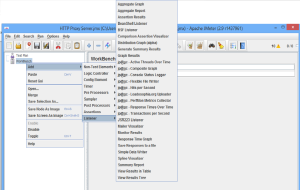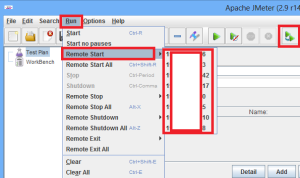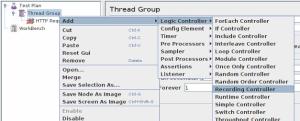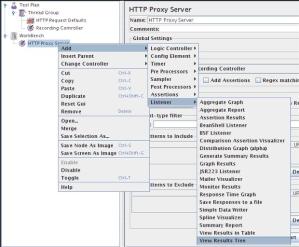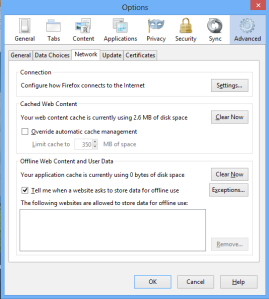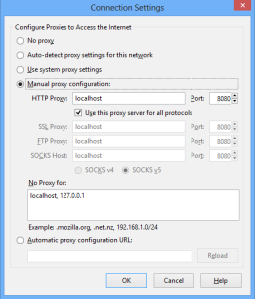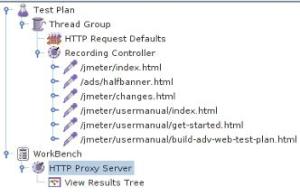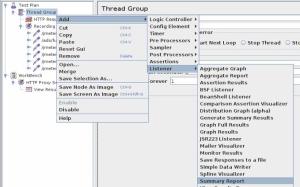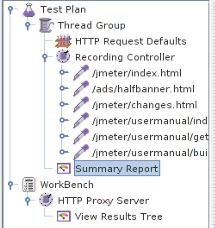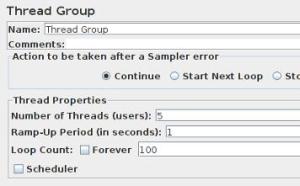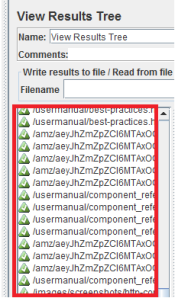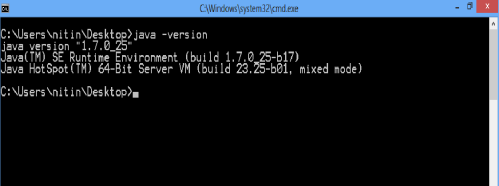(adsbygoogle = window.adsbygoogle || []).push({});
*** Hope you have knowledge of running jmeter test from GUI ***
Running JMeter from command prompt:
1. Open command line prompt from jmeter/bin or Change path to where the ‘.jmx’ file is saved
2. Type command “jmeter –n –t <jmx file.jmx> -l <jtl file.jtl>” and press Enter
3. Wait till the test finishes ELSE for stopping test in between press ‘ctrl+c’ and Press ‘Y’ to stop else ‘N’ to continue.(Interrupted test results may not be correct.)
4. Find the ‘.jtl’ file to be generated at same path where the ‘.jmx’ file is located.
To know the results of test run from command line
1. Open JMeter UI
2. Click on the Work bench and add a listener to it
3. Add a listener as needed and which can upload a file to Jmeter UI
4. Upload the ‘.jtl’ file respective listener to see the results.
Running JMeter on Remote:
Before starting with remote testing, we need to check following Very IMP points:
1. The firewalls on the systems are turned off.
2. All the clients are on the same sub-net.
3. The server is in the same sub-net, if 192.x.x.x or 10.x.x.x ip addresses are used. If the server doesn’t use 192 or 10 ip address, there shouldn’t be any problems.
4. Make sure JMeter can access the server.
4.1 Turn on Sharing from “My computer> Properties> Advance System settings> Remote> Remote Assistance” AND
4.2 Turn on Sharing settings from “Control Panel> Network and Internet> Network and Sharing Center> Advanced sharing settings”
5. Make sure you use the same version of JMeter on all the systems. Mixing versions may not work correctly.
6. Make sure you have changed option to Computer sleeps from “Control Panel>Hardware and Sound>Power Options>Edit Plan Settings” for all machines (Master and Slave/s) to Never
To confirm the communication in channel: try to Ping from Slaves to Master and Master to Slaves, once.
Some terminologies need to understand:
Master – The system running Jmeter GUI, which controls the test
Slave – The system running jmeter-server, which takes commands from the GUI and send requests to the target system(s)
Target – The web-server we plan to stress test
Some important settings before we proceed to Remote test:
1. Go to Jmeter bin folder
2. Open “jmeter.properties” file in Edit mode
3. Go to “# Remote hosts and RMI configuration” section
4. Mention the IP address/es of Slaves as a value for “remote_hosts” and make sure you have uncommented the same.
e.g: remote_hosts=10.1.1.144,10.1.1.35,10.1.1.56,10.1.1.34,10.1.1.140
Note:Make sure you update this line in each run for the slaves included in the test with correct IP
Mention “server.rmi.create=false” for Master AND “server.rmi.create=true” for Slave/s
Uncomment “mode=Asynch”
Uncomment “asynch.batch.queue.size=” and update the value to 250
e.g.: asynch.batch.queue.size=250
(This setting denotes that, if your machine IP is used as SLAVE; it will serve 250 users max to run on.)
NOTE: Say you want to run a test on 5 remote slaves with 1000 of users; your Number of Threads (users) in Thread Group will be 200. (200*5 = 1000 users)
Please visit: http://www.ubik-ingenierie.com/blog/jmeter_performance_tuning_tips/
Running JMeter on Remote from CMD:
Please go through http://jmeter.apache.org/usermanual/remote-test.html to understand how to run jmeter on remote.
Lets run .jmx file remote from command line:
PART 1
NOTE: Make sure you have started the remote servers before running test.
1. Open command line form jmeter/bin
2. Enter following command:
jmeter -n -t myjmetertest.jmx -l myjmetertest_10users.jtl -R ipnumber1,ipnumber2
3. And the rest steps remain same as mentioned in Part 1
PART 2
For descriptive reports:
http://jmeter-plugins.org/wiki/LoadosophiaUploader/utm_source=jpgc&utm_medium=link&utm_campaign=LoadosophiaUploader
1. Open command line from jmeter/bin
2. Enter following command:
jmeter -n -t myjmetertest.jmx -l myjmetertest_10users.jtl.gz -R ipnumber1
3. And the rest steps remain same as mentioned in Part 1 above
You can find the .gz log file in the folder you mentioned to store in while configuring Loadsophia.
You can upload the .gz file to Loadsophia for reports.
Running JMeter on Remote from UI:(NOT recommended for big tests)
NOTE: Make sure you have started the remote servers before running test.
1. Open jmeter GUI
2. Open jmx file you would like to run on remote and add necessary listeners to Test Plan.
3. Click on “Remote Start all” button from top.
Enjoy the Jmeter ride!
My Sincere thanks to:
http://jmeter.apache.org/usermanual for maintaining a very good documentation.
Http://www.openmentor.net for making jmeter understanding start very easy.
And Emili H Halili for a vital book on Apache jmeter.
Suggestions and inputs are always welcomed!
**Don’t hesitate to Share the blog to increase Jmeter user base.**
I won’t mind if you mention credits to this blog while using contents from 🙂
*******
Few Tuning Tips for better results on Remote test.
(adsbygoogle = window.adsbygoogle || []).push({});

